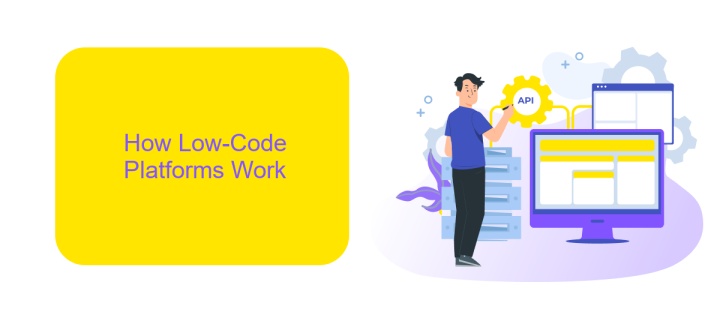What is Low-Code Technology
Low-code technology is revolutionizing the way software applications are developed by minimizing the need for extensive coding. This innovative approach allows developers and non-developers alike to create applications through user-friendly graphical interfaces and pre-built templates. By streamlining the development process, low-code platforms accelerate project timelines, reduce costs, and empower businesses to quickly adapt to changing market demands, making technology more accessible than ever before.
Introduction to Low-Code Development
Low-code development is revolutionizing the way software applications are created by significantly reducing the amount of traditional hand-coding required. This approach empowers both professional developers and non-technical users to build applications through intuitive graphical interfaces and pre-built components. By streamlining the development process, low-code platforms enable faster deployment, increased productivity, and enhanced collaboration across teams.
- Visual modeling tools simplify complex coding tasks.
- Pre-configured templates accelerate the development timeline.
- Drag-and-drop functionality enhances user accessibility.
- Seamless integration with existing systems ensures flexibility.
- Automated workflows boost operational efficiency.
As organizations strive to meet the growing demand for digital solutions, low-code development offers a strategic advantage. It democratizes application development, allowing stakeholders from various backgrounds to contribute to the process. This not only fosters innovation but also ensures that the final product aligns closely with business objectives. By embracing low-code technology, companies can swiftly adapt to market changes and deliver tailored solutions that meet the evolving needs of their customers.
How Low-Code Platforms Work

Low-code platforms function by providing a visual development environment where users can design applications through a drag-and-drop interface. This approach minimizes the need for extensive coding knowledge, allowing users to assemble applications with pre-built modules and templates. These platforms often include tools for UI design, workflow automation, and data integration, streamlining the development process and making it accessible to non-developers. By abstracting complex coding tasks, low-code platforms enable rapid prototyping and deployment of applications, significantly reducing the time-to-market.
Moreover, low-code platforms often support integration with various third-party services and APIs, enhancing their functionality without requiring custom code. For instance, ApiX-Drive offers seamless integration capabilities, allowing users to connect their applications with external systems effortlessly. This service facilitates data exchange between different platforms, ensuring that applications built on low-code platforms can interact with existing IT ecosystems efficiently. As a result, businesses can quickly adapt to changing needs and integrate new technologies, fostering innovation and agility.
Benefits and Drawbacks of Using Low-Code

Low-code technology has emerged as a powerful tool for accelerating application development and reducing the dependency on traditional coding skills. This approach allows businesses to quickly adapt to changing market demands and improve their operational efficiency. By leveraging visual development environments, low-code platforms enable users to create applications with minimal hand-coding, thus fostering innovation and reducing time-to-market.
- Speed: Accelerates the development process by reducing coding efforts.
- Accessibility: Empowers non-developers to participate in application creation.
- Cost-Effective: Minimizes the need for extensive developer resources.
- Flexibility: Allows rapid changes and iterations based on user feedback.
- Scalability: Supports growth with adaptable and scalable solutions.
Despite its advantages, low-code technology is not without drawbacks. It may lead to vendor lock-in, limiting flexibility in the long term. Additionally, while low-code platforms are suitable for simpler applications, they might struggle with complex or highly customized solutions. Security concerns also arise, as the ease of use can sometimes lead to insufficiently vetted applications. Therefore, businesses must weigh these factors when considering low-code adoption.
Use Cases and Examples of Low-Code Applications

Low-code technology is revolutionizing the way businesses approach software development by enabling rapid application delivery with minimal hand-coding. This approach is particularly beneficial for organizations looking to accelerate digital transformation and reduce dependency on traditional IT resources.
One of the primary use cases for low-code platforms is in the development of customer-facing applications. These platforms allow businesses to quickly adapt to changing market demands and enhance customer engagement through personalized apps. Additionally, low-code technology is often employed in internal operations to streamline workflows and improve efficiency.
- Automating business processes and workflows
- Creating customer portals and self-service applications
- Developing mobile applications for on-the-go access
- Integrating with existing systems for seamless data flow
By leveraging low-code platforms, organizations can significantly cut down development time and costs while empowering non-technical users to participate in the app development process. This democratization of software creation not only fosters innovation but also ensures that the solutions are closely aligned with business needs.
- Automate the work of an online store or landing
- Empower through integration
- Don't spend money on programmers and integrators
- Save time by automating routine tasks
The Future of Low-Code Technology
The future of low-code technology is poised to revolutionize the way businesses operate, offering unprecedented agility and efficiency. As organizations strive to keep pace with digital transformation, low-code platforms provide an accessible solution for rapid application development. This technology empowers users with minimal coding experience to create and deploy applications quickly, reducing the dependency on traditional IT teams. As a result, businesses can respond faster to market changes and customer demands, fostering innovation and competitiveness.
Moreover, the integration capabilities of low-code platforms are set to expand, allowing seamless connectivity between various systems and services. Tools like ApiX-Drive will play a crucial role in this evolution, enabling users to automate workflows and streamline processes without extensive technical knowledge. As low-code technology continues to advance, we can expect to see more sophisticated applications being developed, further bridging the gap between business needs and IT capabilities. Ultimately, the future of low-code technology promises to democratize software development, making it accessible to a broader range of users and driving digital innovation across industries.
FAQ
What is Low-Code Technology?
How does low-code technology benefit businesses?
Can low-code platforms be used for complex applications?
How does low-code technology integrate with existing systems?
Is low-code technology secure?
Do you want to achieve your goals in business, career and life faster and better? Do it with ApiX-Drive – a tool that will remove a significant part of the routine from workflows and free up additional time to achieve your goals. Test the capabilities of Apix-Drive for free – see for yourself the effectiveness of the tool.


